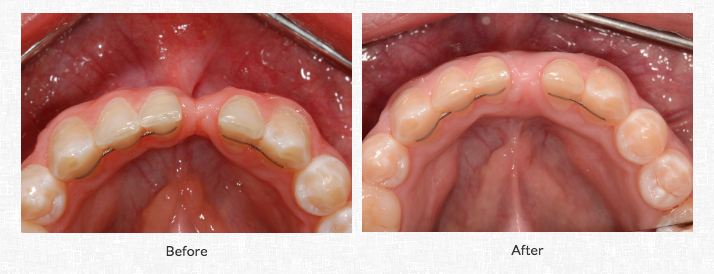
Bone Grafting or Bone Regeneration
Bone grafting or “bone regeneration” is a routine, predictable, and painless procedure that can benefit your oral health and restore your smile. It is not unusual during a dental implant consultation, for Dr. Pottorff to inform you that you may require a “bone graft” to maximize the outcome of implant surgery.
A Brief History of Bone Grafting
Bone regeneration will allow for dental implant placement and preserve our appearance. As we age and lose teeth, the underlying jaw bone that supports the teeth “atrophies” or lost with disuse. As a result, this will affect our ability to eat and our overall appearance. Also, the jaw bone provides cheek and lip support, so they do not sink in. The only reason our jaws have the amount of bone that they do is because of the presence of existing teeth and the fact that those teeth are under continuous function.
Bone regeneration of earlier years involved harvesting and using large quantities of the patient’s bone. Today, Dr. Christopher Pottorff uses processed bone that has been sterilized and has had all organic material removed. Most surgical practices use processed bone, and it is a tried and proven technique for many years now.
A simplified explanation for the success of this form of grafting is that this regenerative material acts as building blocks for your body’s cells. Initially, it mechanically prevents the collapse of the surrounding tissues, whether that being bone or soft tissue. Then, through a process called “guided tissue regeneration,” the human body is fooled, biochemically, to recognize the graft as a natural bone and uses it to grow and replace it with its bone. So the bone, in the end, is yours!
Bone Regeneration for Dental Implants
The simple extraction of a tooth leaves a hole that is surrounded by a shell of bone. This bone’s only purpose in the human body is to support a tooth. As a result, when the tooth is lost, the body quickly begins to resorb the bone. Therefore, Dr. Pottorff will replace the tooth immediately with either an implant or, in this case, a “preservation graft.” Often, it is possible to place an implant at the time of tooth extraction. In these cases, the implant will act almost like a tent pole to hold the surrounding bone up and give it the functional requirements necessary to prevent it from undergoing atrophy. Unfortunately, sometimes it is impossible to place an implant at the time of the extraction due to several possible reasons.
However, it is most frequently present in dental infections or a size discrepancy between the tooth that is lost and the size of the replacing implant. In these cases, most often molar teeth, bone regeneration will be necessary. The graft will fill the void left by the extracted tooth and hold the volume of this space. Thus, allowing the natural bone to multiply and fill the space with your high-quality live bone. Depending on the size of the tooth extracted, the graft requires between three to six months before implant placement.
Bone Regeneration in the Sinus
The maxilla or upper jaw has several qualities that make it unique to grafting as well as the placement of implants. The most significant difference in the maxilla when compared to the mandible lies in the presence of the maxillary sinus. The maxillary sinus is one of several natural air spaces present in the human skull. Therefore, it can impose itself on the roots of the teeth in the upper jaw.
As a consequence of this relationship, when a tooth is lost, the result may be the presence of very little bone between the oral cavity and this air space. In turn, this can make the placement of an implant in the posterior of the upper jaw a slightly bigger project when in comparison to other areas of the jaw.
Fortunately, a relatively simple solution has been developed to handle this problem and render a safe, effective, and stable result for placing implants. Regenerating bone in the sinus has been performed for many years to allow for the use of implants to replace upper molars. The patient should not fear that this will hurt their sinuses. Our experience with this procedure is not only vast and longstanding; its use has been commonplace for many years with no side effects.
The success of a dental implant and its ability to support your new teeth is dependent upon how much bone is available in the site upon implant placement. Dr. Pottorff will know when additional bone or bone repair will be necessary before placing your dental implant.
Contact Our Algonquin Office Today!
To learn about the benefits of bone grafting, read our blog. You may also contact our Algonquin dental office at 847-854-1200 to book a consultation with Dr. Christopher Pottorff and his team at Advanced Dental & Implant Center: Christopher Pottorff, DMD. We also service patients in surrounding neighborhoods such as Huntley, Carpentersville, Crystal Lake, Barrington, Lake in the Hills, West Dundee, Woodstock, Elgin, and South Elgin.
